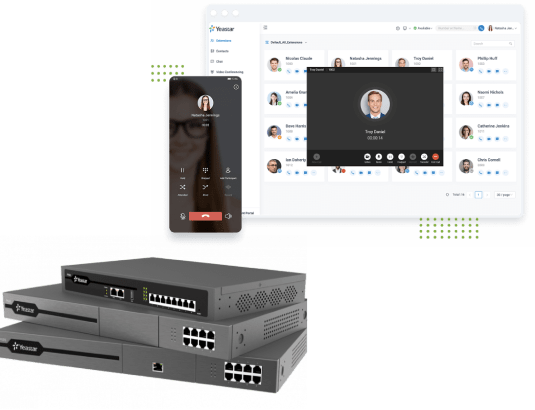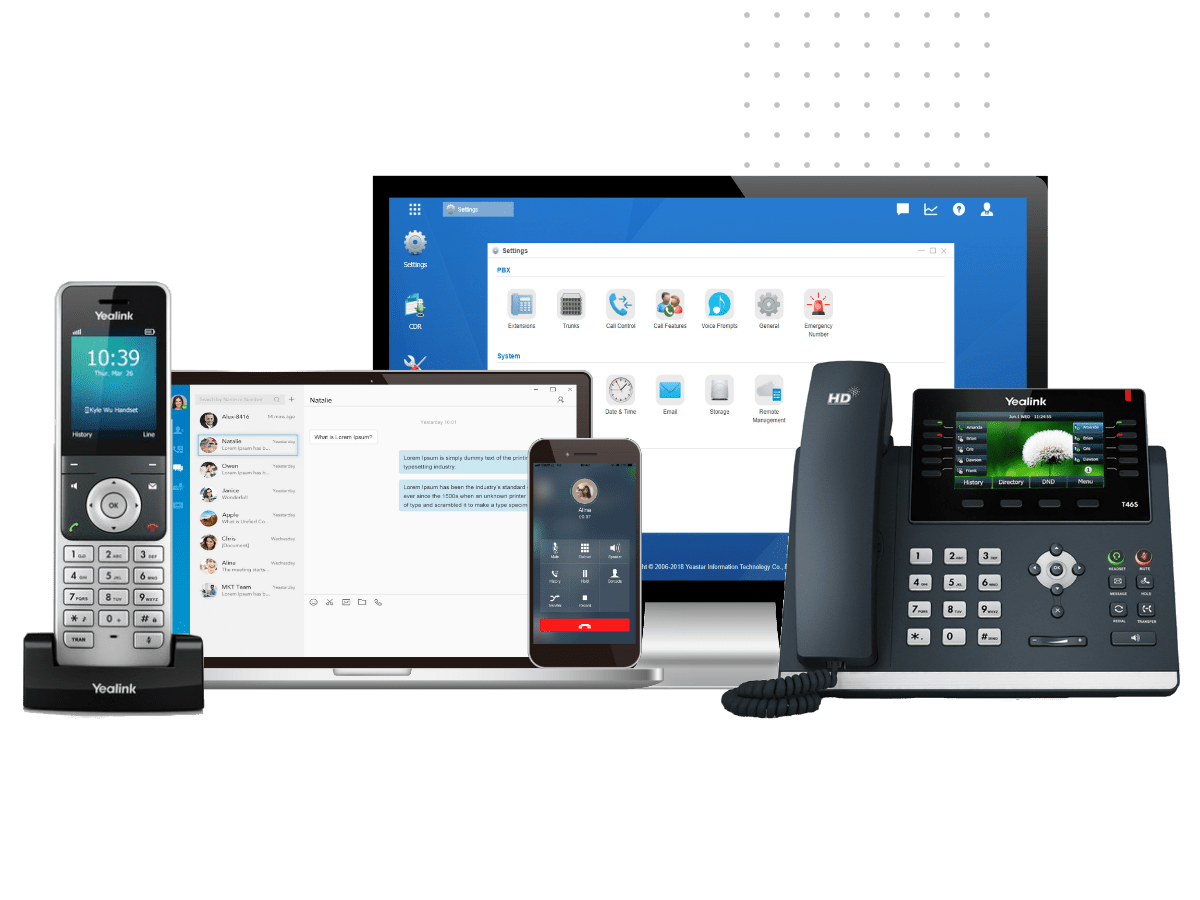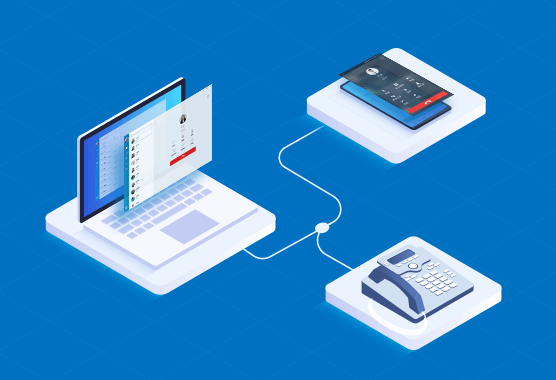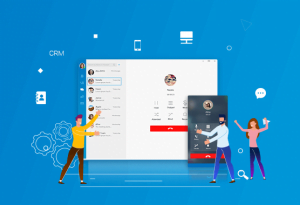

As the switch-off of ISDN and PSTN, the migration to an IP-based business phone system has become an inevitable trend. Companies are then confronted with the choice between on-premise or cloud-based deployment. Well, the debate has been around for years. Despite all the marketing hype, there is no ultimately better option between them. There are fundamental differences as well as pros and cons to each option and the considerations will differ for every business.
To help you make an informed decision, we will look at 5 key questions that you should ask when choosing between an on-premises and cloud PBX system. Before we get started, let’s have a quick look at these 2 deployments.
With a premise voice solution, the hardware is installed and runs on-site at your office or data center. You purchase and own the phone system hardware, networking, server equipment, and more, and your IT staff take care of all the updates and maintenance regarding the system. The calls are routed through traditional phone lines (ISDN, PSTN, GSM) as well as SIP trunking.
There are several compelling reasons to adopt an on-premise PBX solution. If you’re weighing the benefits of a PBX that is kept and maintained on your premise instead of hosted by your providers, here are the arguments in favor of that.
A cloud-based PBX system is delivered entirely over the Internet and managed completely off-site by a service provider. The only equipment you need to purchase is desk phones. You have some control over the system while the hosted service provider supplies voice services and performs all updates and maintenance. Most hosted voice solutions are charged on a subscription basis with minute packages or by minutes.
Should your company opt for a cloud-based PBX phone system? There are certainly many attractive features here. Take a closer look at some of the benefits you might enjoy:
Hosted PBX systems are administered and delivered by a third party. In this case, the systems are maintained on physical servers that are held at an external location. Support, management, and infrastructure maintenance of these systems are the responsibility of the service provider. This solution may be referred to as virtual PBX. Companies who choose this option reduce maintenance costs and can rely on their provider taking on the majority of upkeep. With a hosted PBX phone system, companies are still able to use the advantages of VoIP features, such as IVR, conference calling, and voicemail.
The following may be the reasons why businesses adopt hosted PBX solutions.
In order to decide between maintaining your telephone communications on-site, or relying a hosting provider, you need to assess your business needs and make some predictions about your growth. What is your current staffing? Does your IT department have the skillset to manage an in-house communications system? Would you be better off outsourcing support and maintenance? What about integration with existing systems or unified communications? A current state analysis will help you determine if an on-premise PBX is best for your organization, or a hosted solution is the way to go.
Here are some factors you should consider to help figure out which type of PBX would better suit your business.
One of the big differences between on-premises and cloud PBX is the upfront cost.
Cloud PBX usually falls under an OpEx model with more affordable monthly or annual fees, low initial equipment cost, and setup cost, which means less money to get started. There is no maintenance fee involved. Telecomm providers tend to offer several subscription plans with different licenses, features, and minute packages.
As for the on-premises option, you need to pay fully upfront for the hardware and interface cards (if needed) to ensure complete ownership of the system. However, it also saves you from the risk of fee increases and means lower monthly cost after expenses are covered.
It’s often preferable for large enterprises to buy their own equipment upfront, whereas it’s favored by smaller businesses to pay on a subscription basis.
Related:How to Calculate the Real Cost of a Business Phone System
When you house the PBX system on-site, you will have full control over business communications. It may be a better fit for companies with complex and dynamic communication needs since they can modify it as needed. Also, if the Internet service goes down, they can still rely on traditional phone lines to ensure minimal service disruption.
If you opt for a cloud-based solution, the responsibility of running the PBX is down to the third-party, which can be a huge advantage to small businesses with fewer resources. The potential risk is that the service provider may fail to deliver on its promised quality of service.
In short, it’s a choice between control and responsibility. More control over the system equals more responsibility for maintaining and managing it.
In terms of system expansion, cloud-based phone systems are typically more scalable than on-premises ones. Cloud PBX provides a more flexible solution for businesses with staff growth or reduction during the lifetime of the system. The increase and decrease of phone extensions can be made immediately and businesses only pay for what they need.
If you are a seasonal business with fluctuating communications needs or experiencing rapid growth, a hosted model might work better for you. If your business is fairly stable and does not have significant changes in the number of employees in the foreseeable future, it’s totally okay to opt for the on-premises deployment.
Cloud PBX system is capable of unifying the headquarter with remote offices and a handful of teleworkers by consolidating every employee’s phone extension under one system.
As for on-premises PBX, it certainly has the ability to handle remote users and multiple offices, but comparing to the cloud-based solution, it may be a little more complex and expensive.
As unified communications become the new norm, now many premise and cloud solutions can both provide mobile and desktop softphones as well as a comprehensive UC feature set including VoIP, conferencing, collaboration, unified messaging, and more. Remember to take it into consideration if your business operates across multiple locations and has remote workers as it will bring great convenience and efficiency improvements.
Related: Why Unified Communications Solutions: Top 6 Reasons
With the on-premises deployment, the responsibility of installation, upgrades, and maintenance all falls on the shoulders of your IT staff. So before purchasing a premise PBX, businesses should evaluate their IT strength. Do you have technicians with the required expertise to handle all those work? Besides, some businesses may have IT resources that are fully capable of managing their enterprise phone system but would rather prioritize more important and revenue-generating projects.
A cloud-based hosted phone system is up to the service provider to manage the system, which would be beneficial for small businesses and start-ups lacking in technical expertise or resources. There’s also no need to worry about any network issues.
Both on-premises and cloud PBX are effective and reliable company phone systems that offer different benefits, whereas each system may be a better option for specific communications requirements. When it comes to the choice between them, there are many things to factor in, such as the size of your business, the number of remote offices, the level of your technical expertise, your tolerance for being dependent on service providers, and more.
Make a thorough evaluation before purchasing. We have worked out a Small Business Phone System Buyer’s Guide to help you find the right VoIP enterprise phone system that will save you money, time, and effort.





By now, you have probably heard about all the fantastic

Softphones bring a wealth of advantages to business communication, such

Please be informed that our office will be closed from

Please be informed that our office will be closed from
